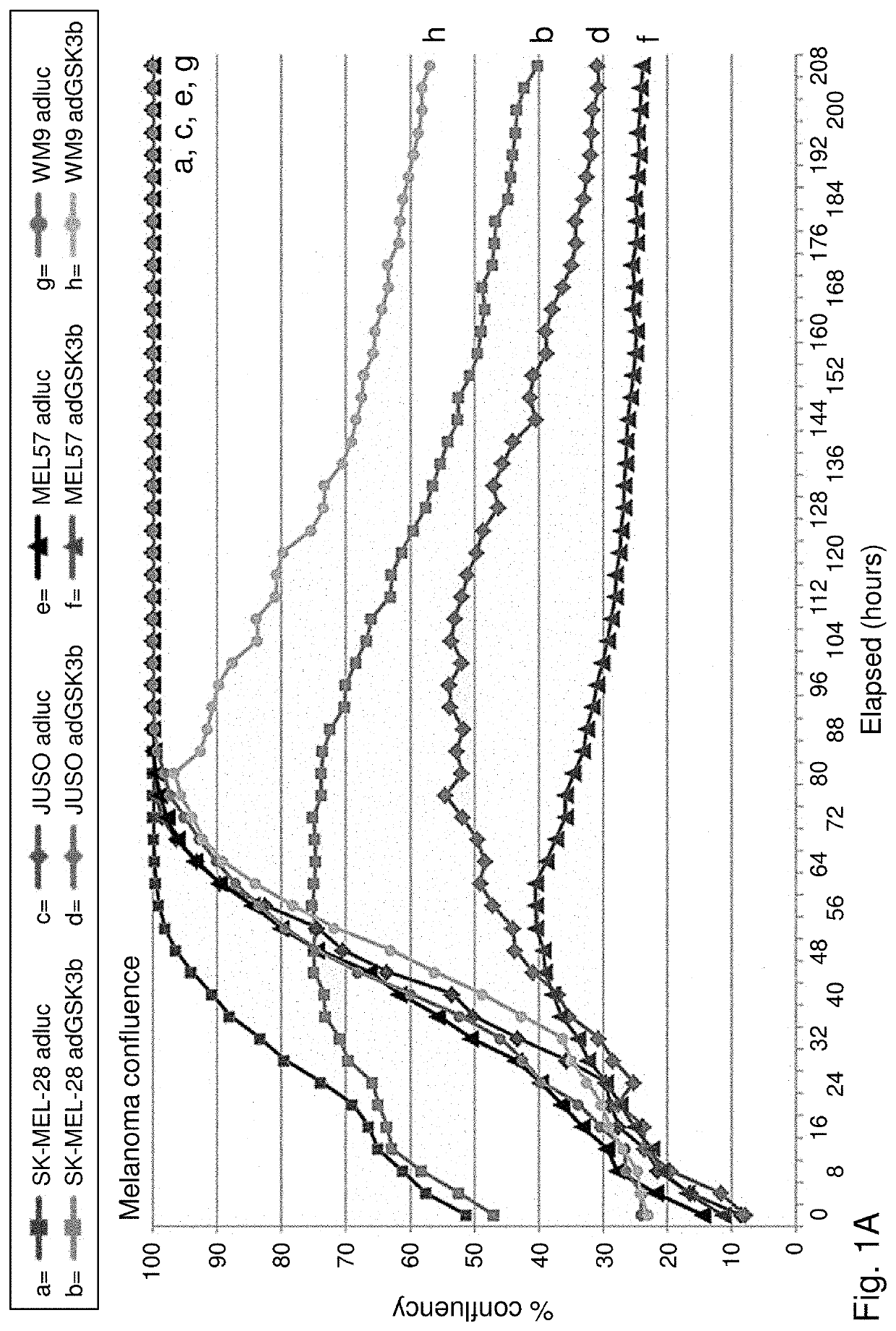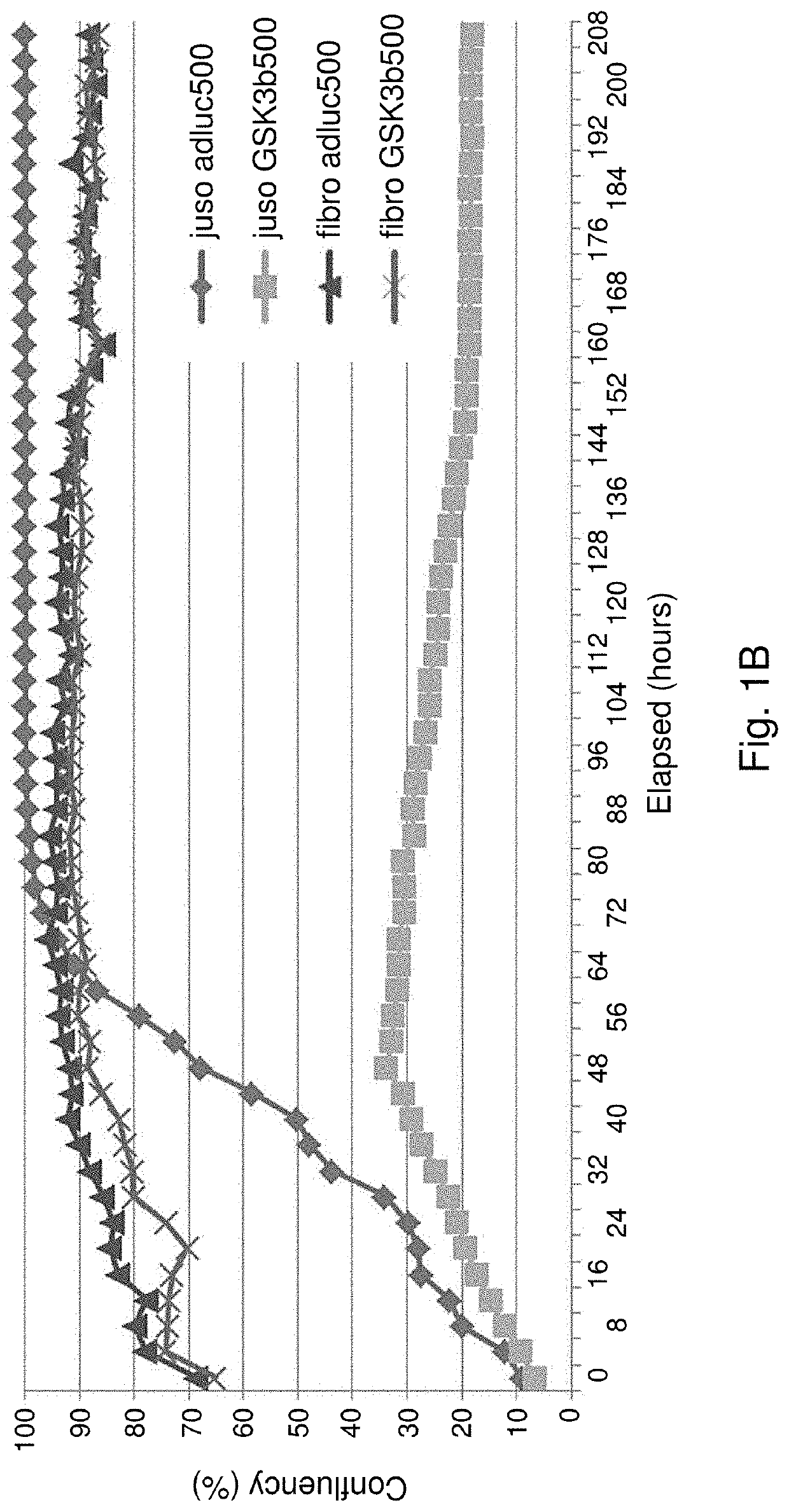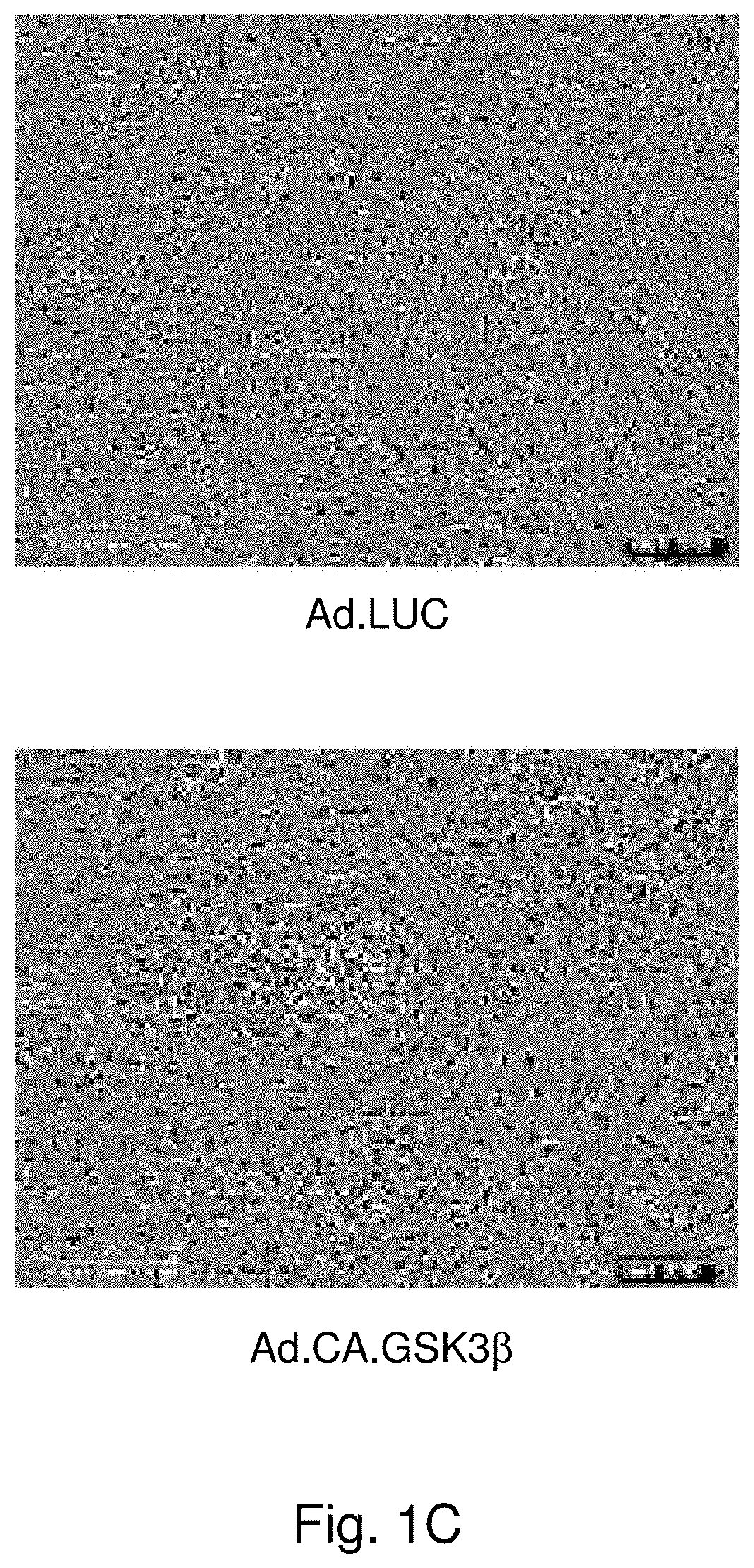Recombinant Replication Competent Viruses Comprising a Coding Region for Glycogen Synthase Kinase-3 (GSK3) and Methods of Killing Aberrant Cells
a technology of glycogen synthase and coding region, which is applied in the direction of dsdna viruses, biochemistry apparatus and processes, enzymes, etc., can solve the problem that viruses are incapable of down-regulating p53 activity, and achieve the effect of increasing replication selectivity, facilitating selective expression of early region genes, and increasing replication potential
- Summary
- Abstract
- Description
- Claims
- Application Information
AI Technical Summary
Benefits of technology
Problems solved by technology
Method used
Image
Examples
example 1
GSK3-Beta Expressing Adenovirus Inhibits the Growth of Human Cancer Cells, But Not Primary Non-Malignant Human Cells, In Vitro
[0071]To evaluate the effect of GSK3-beta expressing adenovirus on cancer cells and non-malignant cells, we cultured 4 different melanoma cell lines (SK-MEL-28, JUSO, MEL57 and WM9) and a skin-derived primary fibroblasts (Fibro) freshly isolated from healthy skin.
[0072]Cells were cultured in complete RPMI medium (RPMI HEPES and L-Glutamine medium (Lonza) supplemented with 10% heat-inactivated FCS (HyClone), 100 IU / mL sodium-penicillin, 100 ug / mL streptomycin, 2 mM L-glutamine and 50 uM β-mercaptoethanol). Cells (SK-MEL-28, JUSO, MEL57, WM9 or Fibro) were seeded in a 96 well plate (10000 cells per well). 24 hours post plating cells were infected either with 500 multiplicity of infection (MOI) Ad.LUC (Ad5Luc1, (ref 17) Krasnykh et al. J. of Virology, 75 (2001):4176-4183) or Ad.CA.GSK3-beta (Kim et al. (ref 18) J. of Bio. Chemistry, 277 (2002): 41888-41896). Cel...
example 2
Induction of Apoptosis in Human Melanoma Cell Lines by Transduction with Ad. CA. GSK3-Beta
[0076]To demonstrate that ad.CA.GSK3-beta was able to induce cancer cell killing, 10.000 melanoma cells (SK-MEL-28, JUSO, Mel57 or WM9) were plated in a 96 well plate in complete RPMI medium. 24 hours post plating the cells were infected with 500 MOI of Ad.LUC or Ad.CA.GSK3-beta together with a 1:1000 FITC Caspase3 / 7 reagent (IncuCyte) following the manufacturer's procedure. Cells were incubated for 8 days at 37° C. and 5% CO2 in the IncuCyte Zoom. Pictures of the wells were taken every 4 hours by IncuCyte. IncuCyte Zoom Software was used to analyze the data, a confluence and a green confluence mask were applied by the software to obtain the percentage of confluence per well and the percentage of green signal in the well respectively. The fraction apoptotic cells was determined by dividing the green mask value by the confluence value at the different time points.
[0077]Over a period of 6 days, t...
example 3
GSK3-Beta Expressing Adenovirus Induces Selective Cancer Cell Killing in Metastatic Melanoma Tumor Suspensions
[0079]To demonstrate the anti-tumor effect of adenoviral delivered GSK3-beta, metastatic melamoma tumor cell suspensions were infected with Ad.LUC or Ad.CA.GSK3-beta.
[0080]Viable tumor tissue was obtained from melanoma patients. Samples were then minced with scalpels, and dissociated in HBSS (Whittaker Bioproducts) with 0.1% DNase type I and 0.14% collagenase type I (Sigma Chemical). Single-cell suspensions were then frozen with 10% DMSO in a controlled-rate freezer in aliquots of 15 to 20 million cells per mL and stored in liquid nitrogen until use.
[0081]The melanoma cell-suspensions were thawed, and 1.200.000 metastatic melanoma tumor cells were cultured in complete RPMI in a 6 well plate and infected 4 hours later with 500 MOI of Ad.LUC or Ad.CA.GSK3-beta. Cells were then incubated for 5 days at 37° C. and 5% CO2. After 5 days, samples were harvested (centrifugation at 15...
PUM
| Property | Measurement | Unit |
|---|---|---|
| Nucleic acid sequence | aaaaa | aaaaa |
Abstract
Description
Claims
Application Information
 Login to View More
Login to View More - R&D
- Intellectual Property
- Life Sciences
- Materials
- Tech Scout
- Unparalleled Data Quality
- Higher Quality Content
- 60% Fewer Hallucinations
Browse by: Latest US Patents, China's latest patents, Technical Efficacy Thesaurus, Application Domain, Technology Topic, Popular Technical Reports.
© 2025 PatSnap. All rights reserved.Legal|Privacy policy|Modern Slavery Act Transparency Statement|Sitemap|About US| Contact US: help@patsnap.com



